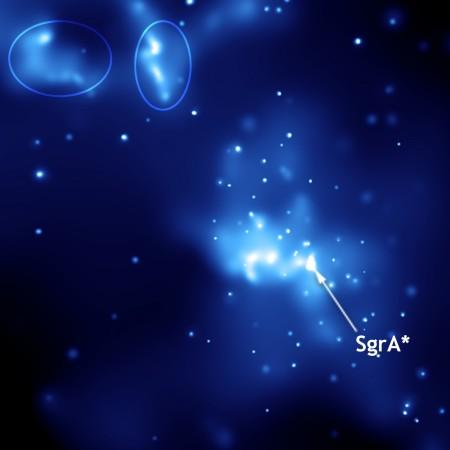
There could be thousands of small black holes hidden throughout the Milky Way galaxy, especially around the supermassive black hole (SMBH) that sits in the center.
Every single galaxy is likely to have an SMBH in its center around which the whole galaxy spins, slowly feeding it over billions of years. Results of a new study at the Columbia University, however, seems to suggest that the one in the center of the Milky Way –Sagittarius A*– has been found to actually have a number of smaller black holes surrounding it. This finding, notes a report by Phys.org, confirms an old prediction that has now been proven with actual data.
"Everything you'd ever want to learn about the way big black holes interact with little black holes, you can learn by studying this distribution," said Columbia Astrophysicist Chuck Hailey, co-director of the Columbia Astrophysics Lab and lead author on the study.
For over twenty years, research around black holes has been unsuccessful in proving an assumption made by astrophysicists that there has to be thousands of small black holes around supermassive black holes in large galaxies. This prediction is explained through a simple line of reasoning: if there is an SMBH in the center of a galaxy, then there also has to be thousands of small black holes- remnants of stars that used to populate the vicinity, according to a report by Forbes.
The Milky Way is 100,000 light years across and the Sagittarius A* is a monstrous 4 million solar mass object. Scientists expected to find thousands of small black holes in a region that is roughly 6 light years wide, surrounding it.
This study devised a new way to find these celestial objects and so far, researchers have been able to identify at least a dozen small black holes there.
Instead of looking for black holes themselves, especially singular, non-binary black holes, scientists started to search for X-ray emissions that are given out when black holes mate with small, low-mass stars. "...the marriage emits X-ray bursts that are weaker, but consistent and detectable. If we could find black holes that are coupled with low mass stars and we know what fraction of black holes will mate with low mass stars, we could scientifically infer the population of isolated black holes out there," said Hailey.
Using this method and sifting through NASA Chandra data, they were able to find 12 black holes within three light years from Sagittarius A*, notes the Phys.org report. Scaling it up, scientists now predict that there could be anywhere between 300 to 500 binary and about 10,000 isolated black holes around Sagittarius A*.
"This finding confirms a major theory and the implications are many," Hailey said. "It is going to significantly advance gravitational wave research because knowing the number of black holes in the center of a typical galaxy can help in better predicting how many gravitational wave events may be associated with them. All the information astrophysicists need is at the center of the galaxy."

















